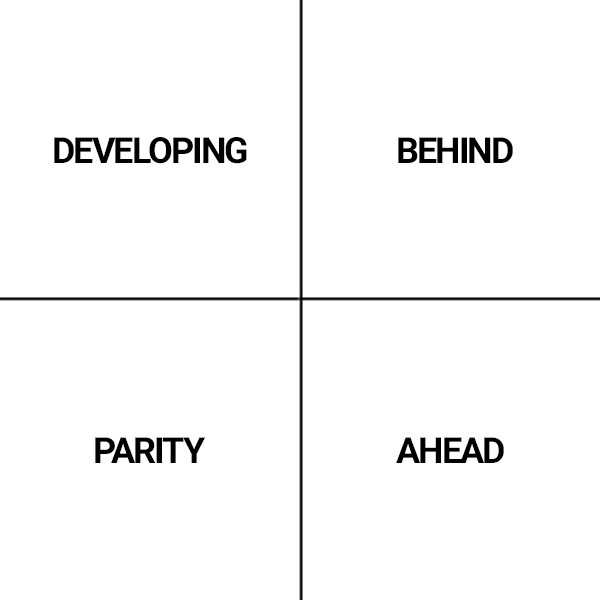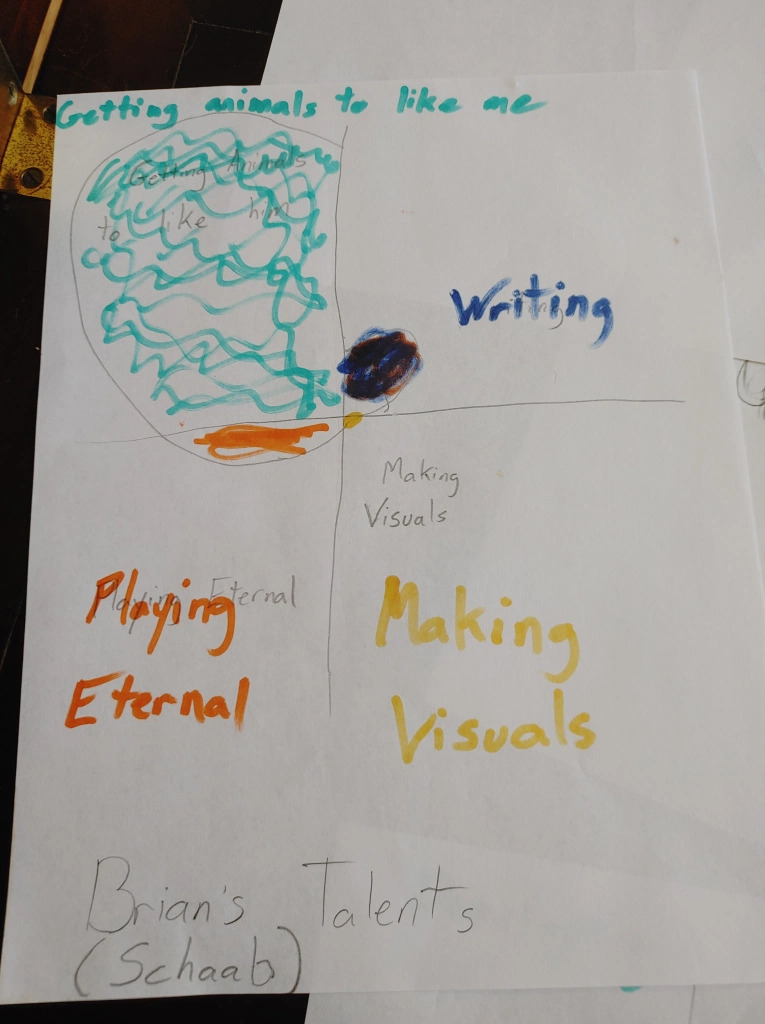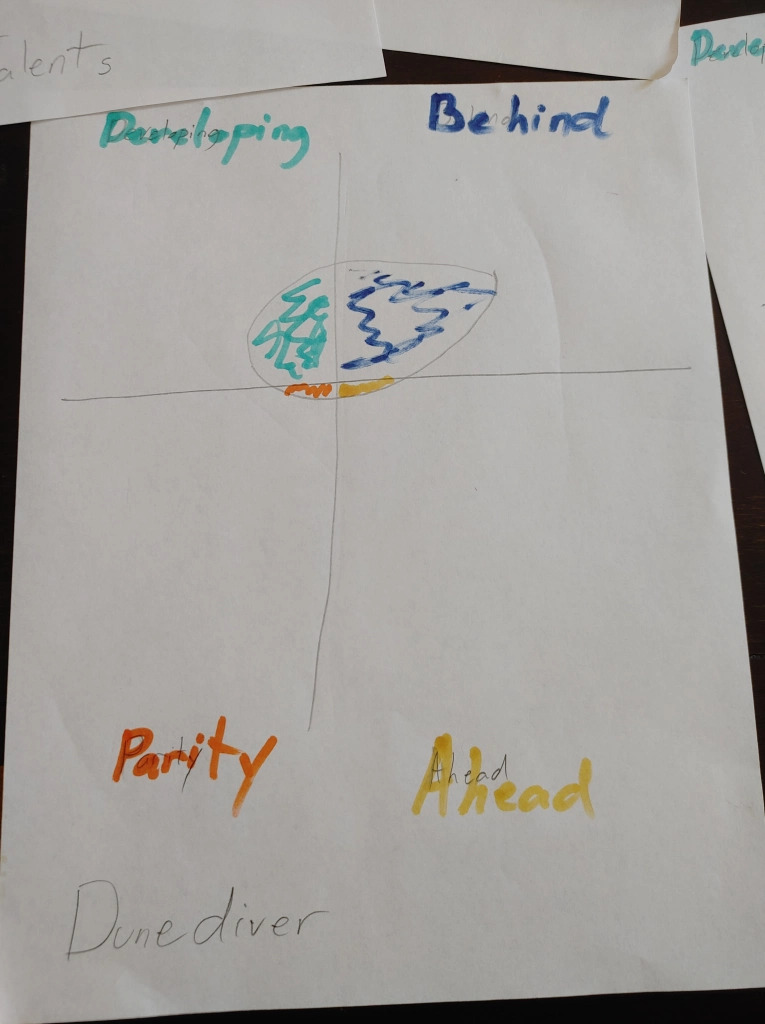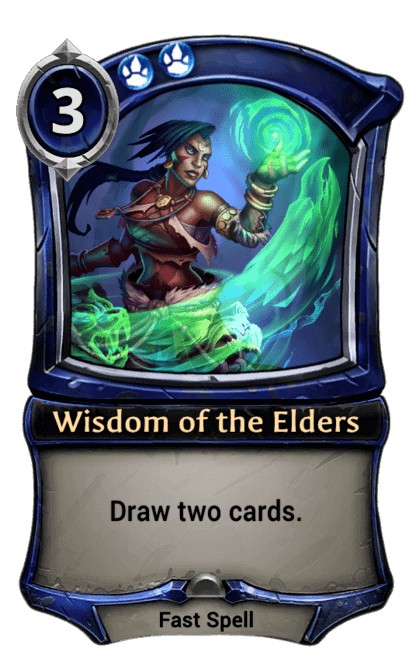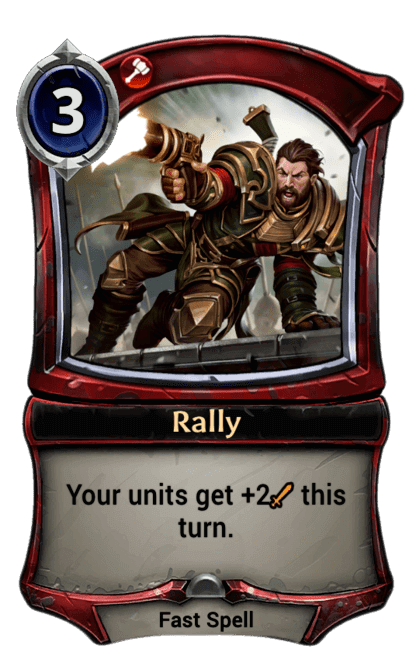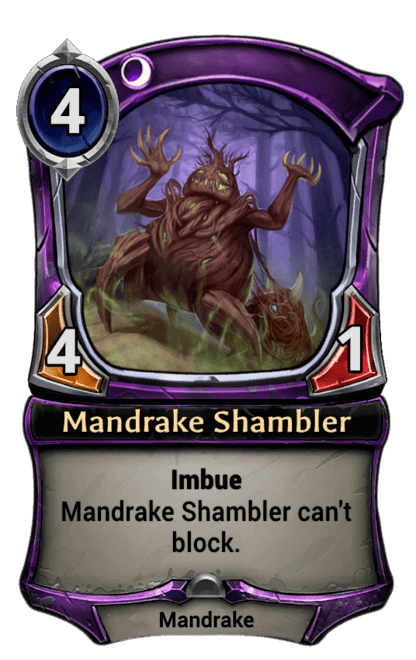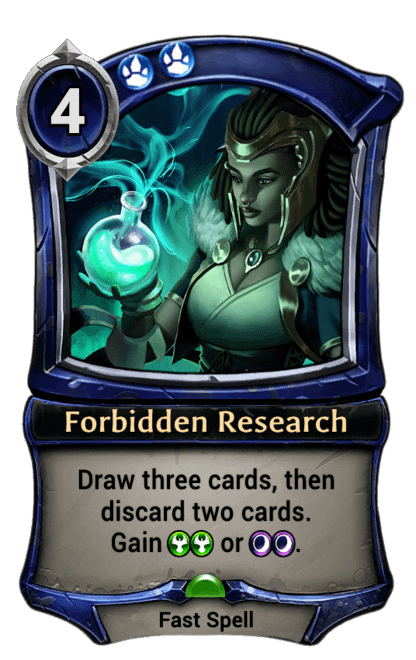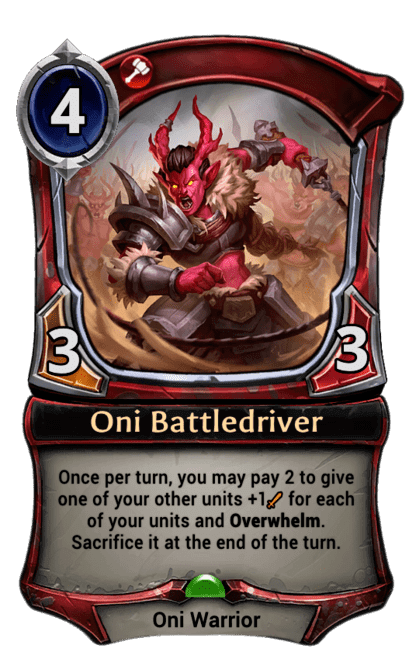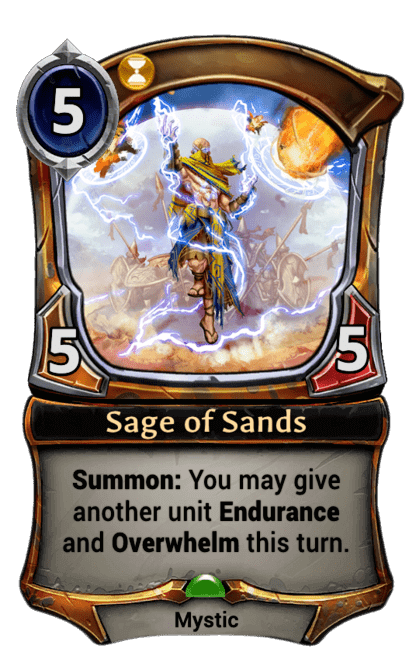Quadrant Theory Part 1 - Card Evaluation
Guide by Schaab - September 28, 2020
Table of Contents
This article originally appeared at https://letstalklimited.wordpress.com/2020/09/11/quadrant-theory-part-1-card-evaluation/
1. Evaluating Cards
I struggled, I really did. For days, weeks, leading up to Grand Prix Providence, I found myself floundering in areas where I usually excel. I questioned all the methods and strategies that I’d been successful with in the past. Changing my approach didn’t lead to better results. Nothing seemed to be working. No matter how much I thought about it, no matter how hard I tried, I couldn’t solve the puzzle. How, just how, do I make my friend, Charlie, understand that Trove of Temptation is an atrociously bad limited card?
Trove of Temptation (Ixalan) - Magic: The Gathering
I could not have been more excited to play in GP Providence, my first large MTG tournament. Not only was it limited, but it was team limited – an incredibly fun and interesting format that I’d be playing for the first time. I’d spent about two years drafting multiple times per week at my LGSs, listening and re-listening to episodes of Limited Resources, watching old Pro Tour drafts, and consuming all the best limited content I could find. I had, for sure, done my homework. My body – I swear to you – deflated just preparing to write about this particular limited set: Ixalan.
If you’re unfamiliar with MTG, imagine you spent two years studying Rembrandt, Picasso, and other masters of their craft only to find out that the art contest you’ve entered is actually a paint-by-number with five colors. There have been a lot of great MTG limited sets in the past few years: Ixalan wasn’t one of them. Still, my team made day 2 (due in no part to my personal record), I got to meet some world-class players, and the entire weekend was a blast. I just wish it were a different format.
My team was not at risk of putting a Trove of Temptation in one of our decks. Good teammates listen to each other, my feelings on the card were well known, and Charlie wouldn’t put Trove of Temptation in his deck just like I wouldn’t put a card in my deck if he were adamant that I shouldn’t. It’s not uncommon for Charlie and I to disagree on cards. In fact, you benefit from being around people who will challenge you constructively. If your ideas are sound, they should be able to withstand some interrogation. Often, to prove my point, I’d explain myself with probability and math. This way, even if my explanations weren’t 100% clear, I could bring Charlie around to: “Ask Schaab about it if you really want to know. He’ll explain it in nerd terms.” But we couldn’t reach an agreement, even with nerd terms.
Towards the end of the weekend, Charlie would casually bring up Trove of Temptation just to watch me get frustrated by my inability to explain myself as well as I wanted to (He’s the kind of person who attacks with 0/1’s to “send a message”). For every scenario I described, he’d describe a reasonable counter. For every answer, a response. He didn’t even try to convince me that it was good – just argued that it wasn’t that bad. It was like playing against a control deck that never played a win condition. I couldn’t explain why I hated this card so much.
Enter: Quadrant Theory. Why is Trove of Temptation such a bad card? It excels in one quadrant and it’s the one I care least about. Beautiful in its simplicity. I’ll explain further.
2. Introduction to Quadrant Theory
Quadrant theory is a method of card evaluation originally created by Brian Wong, former co-host of Limited Resources. Its application has since been expanded by current LR co-host and occasional Eternal streamer Luis Scott-Vargas. The original articles are excellent (especially Marshall’s intro for a life level-up) and I highly recommend you read them. I’ll try to briefly explain what Quadrant Theory is and how it applies to Eternal.
Quadrant theory breaks down games of Eternal (MTG, but you know what I mean) into four phases:
- Developing: Turns 2-6. In general, players are casting their cards on curve.
- Ahead (Winning): You’re accruing some kind of advantage with each turn, either on the board, in life totals, or cards. If the game continues this way, you’ll win.
- Behind (Losing): The opposite of winning. You’re chump blocking, losing life each turn, or your opponent is drawing extra cards.
- Parity (Equality): Not much is happening. Both players are playing “draw, go.”
Before I provide examples of some cards that are good in each category, I want to clear up a misconception: Cards aren’t placed neatly into individual quadrants. Let’s place my talents in to quadrants:
As you can see, there are moderately shaded areas for Playing Eternal and Writing. These talents are dwarfed by my far more important ability of getting animals to like me. You’ll notice there is a tiny yellow mark in the “making visuals” section. It’s technically something I can do, but you really don’t want me to.
Let’s use some awful visuals to discuss two very similar cards: Dunediver and Dune Phantom.
Dunediver
Dune Phantom (Is the card’s real name, apparently. I just call it Phantom Ambusher in my head, so that’s what I wrote down.)
Dunediver gets a little bump in the “ahead” and “parity” categories because it has a whole one attack. If you’re ahead because you have one creature and your opponent has zero, drawing Dunediver will pull you slightly further ahead. Not so with Dune Phantom, so it’s not represented at all in the “ahead” category. They’re about equally good while developing. Dune Phantom is slightly better while you’re behind (I didn’t mean to make it so dramatically better in the “behind” quadrant. See: Schaab’s Talents – Making Visuals) because one of the most common reasons you’re behind is dying to a flyer.
3. Developing (Turns 2-6)
Trail Maker
Trail Maker gets a high mark for developing because it’s fantastic if you play it on turn 2. It fixes your power AND ramps you. It does pretty much nothing to break parity. It has a score in both ahead and behind because it can attack and block.
Towering Arachnid
Atrocious in the developing stage. You don’t want to be sacrificing creatures in the first few turns. Bad when you’re behind because you have to sacrifice a creature, putting you further behind. It’s best when you’re ahead, and those are the cards I’m least interested in.
Caravan Guard
A+ developing card. Not so great if you’re trying to attack your opponent…
Wisdom of the Elders
To see why this card is bad in the developing category, go ahead and cast it on turn three while your opponent plays literally any unit.
4. Ahead (Winning)
Rally
You’re ahead, which means you probably have at least one creature that won’t be blocked. Rally will deal at least two damage and put you further ahead. Sometimes you have a lot of creatures and it puts you way ahead. It can certainly break parity. It’s horrendous when you’re behind because it’s not a creature and the +2 is unlikely to matter. You can probably think of a scenario where this card is good from behind but you really want to focus on what your cards on doing on average. Through that lens, if you draw Rally when you’re already behind, most of the time you drew a dead card.
Mandrake Shambler
You have to be ahead for this card to be good. If you’re behind (your opponent is attacking you), you’re staying behind. If you’re ahead, you’re pulling further ahead. You want cards that are the opposite of that. If you’re putting your card in this deck, maybe you really are finding yourself in a lot of true racing situations. So stop putting it in your deck (There are always exceptions, of course, but really don’t put it in your deck).
5. Behind (Losing)
People, myself included, often evaluate cards through a Best Case Scenario lens. We see a cool card, think of the situations in which it would be good, and our brains go “That’s what this card does.” What does Siege Train do when you’re behind? Who cares? Get out of here, nerd. CHOO CHOOOOOOOOOO! Siege Train was my Pack 1 Pick 1 for my first draft of the set, and I would be a liar if I told you that I read the card and said “hmmm, it’s not all that great when you’re behind because it has reckless.” There was no part of my brain that thought about being behind. Who’s planning on being behind? I can’t hear your negativity over the sound of this train I’m about to play CHOO CHOOOOO!
Siege Train
Quadrant theory, seriously, helps remind me that I am not always going to be ahead in games. Sometimes I’ll look at a new card and immediately think it’s busted. But then I apply quadrant theory and I imagine what the card is like if I’m behind, which gives me a better idea of what the card is going to do on average. It’s so easy to judge a card by what it does when it’s best while ignoring the situations where it’s bad. Quadrant theory helps remind me of those situations.
What separates a true bomb from a really good limited card? The ability to bring you back from behind. Svetya, Lightbringer is an incredibly good limited card. Severin of the Dark is a bomb. I was lucky and had both in a deck recently. My opponent was crushing me and I was going to die in a few turns. Svetya, Lightbringer, while great at destroying parity, wasn’t going to save me. Severin of the Dark was the better draw (and the better limited card), I top-decked it, and won a game I had no business winning. Why? Severin of the Dark is excellent in the “Behind” category (also ahead and parity and developing) like all true bombs are.
6. Parity (Equality)
This is a tough one. I immediately picture a full, stalled out board with 8-10 units on both sides, but that’s just one type of parity. You and your opponent could each have a single unit or no units and you would also be at parity. If you showed an experienced player the board, they wouldn’t be able to tell you who is attacker and who’s the defender. That’s parity. It’s the part of the game where you say “I sure hope I draw something good.” The cards you’re hoping to draw are good at breaking parity.
Forbidden Research
This card crushes parity. If you and your opponent are both counting on the top of your deck to break parity, this card puts you far ahead. You get the best of those three cards and, at that point in the game, there’s a good chance the two cards you discarded weren’t going to help you. You just saved yourself from drawing those cards. This card makes me groan when my opponent top-decks it, which is how I know it’s great at parity.
Siege Provisions
Can help break parity more than a vanilla unit because of its repeatable effect. As long as your stage of parity involves at least one creature on each side of the board, Siege Provisions will help disrupt that. Terrible when you’re behind. Can pull you further ahead if you’re ahead. Awful while you’re developing.
Oni Battledriver
Don’t play this card while you’re developing if you can help it. That’s how you know a card isn’t great in the Developing quadrant. If you don’t want to play your card on curve, it’s bad in the development quadrant (e.g. Mightweaver, Worldly Cleric, Natural Order). When you’re behind, this card says “3/3” and that’s it. PSA: While that last sentence is true, this card is great. If you’re at parity and you draw this card, you’re going to quickly be ahead in most scenarios.
7. Racing and Roles
Given the literal infinite number of game states that are possible, people often find Parity too broad of a category. Former Farming Eternal contributor, Brian Grasher, found it helpful to include “racing” as its own separate category. Including racing in Quadrant Theory is a new idea to me and one that I’ve recently seen arguments for on the Farming Eternal Discord. Arriving at correct conclusions quickly isn’t my specialty so I’ll need some more time to think about it, but here’s my initial reaction: I agree that Parity is too broad but disagree with the solution of making Racing its own category.
Misassigned Roles
If you begin down the rabbit hole of consuming CCG content, it won’t be long before you become aware of “Who’s the Beatdown” by Mike Flores. Like many concepts that make one great at limited, it’s fairly simple: In a game, you’re either the attacker or the defender and should play accordingly. Correctly identifying which role you’re supposed to occupy is essential and shifts throughout the game. If you and your opponent are both attacking past each other, only one of you is correct. First, look at the math on the board. Are you going to kill your opponent first? If so, cool. But then why is your opponent attacking? Presumably they can also do math and realize that this won’t work out in their favor. So why do they think they can win this race? One of you is wrong.
Sage of Sands
You have two 2/2s and your opponent has a Sage of Sands. You have two cards in hand but no power available. Your opponent attacks you for five, you take it, and they pass the turn. You didn’t block with your 2/2s, so Vroom Vroom you’re racing! No, you are not racing. You are behind. Often, when people describe their racing situation, they’re describing being behind. You’re not racing the Sage of Sands – you’re losing to it. Not only are you losing to the math on the board, but you’re not even making your opponent consider what might be in your hand by racing.
Let’s imagine you just held the creatures back, didn’t play a power, and passed the turn back to your opponent with three cards in hand. If I’m the one attacking, there are so many possibilities for me to consider now. What are the cards in their hand? Can I afford to lose my 5/5 if they have something? Maybe the answer is yes, so I attack anyway. But that 5/5 might be my only way to win the game and I can’t risk attacking into two creatures while my opponent has power available and cards in hand. In the situation described above, even if you can’t do anything about the 5/5 that’s attacking you, remember: your opponent doesn’t know that. The more experienced your opponent, the more likely it is that they’ll make you have it. But against a lot of players, I promise you, they will stop attacking if you have blockers and open power. Then you have time to keep drawing cards and find your answer.
When people find themselves in a bad spot, they think they might as well race because they’re in a losing position anyway. Your opponent might not know that. Fake it. Pretend you have two blockers and all your power for a piece of interaction in your hand that’s not actually there. Your opponents, sometimes, will stop attacking you. It might not be a great chance to win, but it’s probably better than just losing to the math that’s on the board. It’s easier to look at a loss and say “eh, we raced and it just didn’t work out.” It’s much harder to admit that you misunderstood your role and should’ve made different decisions. In most cases, racing is a situation in which one player misunderstands their role.
Playing to Outs
Another game state that people often call racing: Playing to your outs. When your opponent is dealing you five damage per turn and you’re only dealing them three, you’re not racing – you’re losing. That being said, there are times when your best chance to win the game is to keep attacking your opponent for three and hope (PLAN) that the top of your deck helps you out. But in this scenario, you should know which cards you’re hoping to draw that can help you push through. If you’re not thinking about which cards can actually help you win the game, you’re not racing, you’re just losing slowly. If you watch high level players at this stage in the game, you’ll probably start to see them make odd decisions. They might block with some of their “better” creatures to stay alive and play in a way that doesn’t make a lot of sense. That player is playing to their outs. We don’t know it, but there’s a card or combination of cards that they’re hoping to draw off the top of their deck. And when that player wins that game, they didn’t win the race – they were behind, put themselves in the best possible position to win that game (even if the chance was very small), and it worked out.
8. Quadrant Theory and Deckbuilding
Quadrant Theory as it applies to deckbuilding will be covered in a follow-up article. I have always used quadrant theory as a card evaluation tool, so I want to make sure I know what I’m saying before I talk about it as a deckbuilding tool. When I helped newer drafters at my LGS, they undoubtedly got tired of hearing me ask “What does this card do if you’re behind?” It’s common for people to say things like “I’m trying to build an aggressive deck.” Cool, so what happens when you play against another aggressive deck? Or what if you just happen to be on the draw in most of those games? Maybe your intention was to draft an aggressive deck, but you didn’t draft Constructed Burn. Limited doesn’t work that way. Your roles aren’t clearly defined the way they often are in constructed. Your role can change from turn to turn and has to be constantly reevaluated.
Most of the time, you didn’t build an aggro deck, you built a Midrange deck that leans aggressive. There are exceptions to this. On Episode 69 on Farming Eternal, @hatsonlamps discusses cutting Lightning Strike from a Skycrag deck. I’m making these numbers up, but my sense is that most Limited decks break down something like this:
True Aggro: 5-10%
Midrange 80-90%
True Control 5-10%
You’re playing midrange most of the time. Maybe you’re playing aggro midrange, maybe you’re playing control-ish midrange, but you’re most likely playing a midrange deck against another midrange deck. This is why you want cards that are good in multiple quadrants – because you don’t actually know what your role is going to be when the game starts. Here’s an example of something boring: Rebel Sharpshooter. Experienced drafters love a 3/3 for three. I’m happy to play it on turn three, it attacks well, and it blocks well. Now, there’s also text on this card. If it becomes bigger, it suddenly becomes much better in the “ahead” quadrant because now it’s an excellent attacker while only being a slightly better blocker. This is a card that can go in to any deck, but leans aggressive and will be better in that style of deck. Rebel Sharpshooter can hold her own in the other quadrants but it really excels when you’re ahead or trying to attack. Good most of the time, better when you’re enacting your game plan. Fill your deck with cards like that.
9. Final Thoughts
While I love the idea of breaking down the Parity quadrant further, my fear is that players will evaluate their games like this: Am I ahead, behind, or racing? I think that’s the wrong question. Racing isn’t a game state. You’re ahead, behind, or at parity and unsure of which one you are. Figuring that out is one of the many hard parts of limited.
Happily, I think advocates of including Racing as a category and I reach the same conclusion: You want cards that are good in multiple quadrants. I’ve heard people say things like “sometimes you’re winning the race and sometimes you’re losing it, so you want cards that are good in both situations (i.e. flexible).” That’s just another way of saying, “You don’t know if you’re going to be the attacker or the defender, so you want cards that are good in both situations (i.e. flexible).” If you find yourself losing a lot of races, it’s possible that you’re misidentifying the games where it’s correct you to the be the defender (even if you built an aggressive deck).
So, why is Trove of Temptation a horrendously bad card? Let’s put in quadrant theory: It’s only good – not even great – in one quadrant (ahead) and that’s the one I care least about when I’m evaluating limited cards.
You don’t know if you’re going to be the attacker or the defender in your next game. You might be the attacker turns 2-7, then the defender turns 8-10, and then the attacker again. That’s how limited works. You’ll find yourself ahead, you’ll find yourself behind, and you’ll find yourself at parity. Those situations will happen frequently, so you want cards that are pretty good in all of them. Quadrant theory helps me evaluate cards more objectively because I know my brain is immediately going to think of all the situations in which the card is great and disregard the rest. Quadrant theory reminds me to ask myself “what does this card do if I’m behind?” which isn’t a question that comes naturally. It can help you determine what a card will do in a majority of games, not just the ones where it shines. I find it a helpful framework for card evaluation and am looking forward to learning more about it as a deckbuilding tool. For now, I’ve got a train to catch. CHOO CHOOOOO!
-Schaab
Draft Enthusiast
Let's Talk Limited
Patreon
The best place to get in touch with me and ask questions is the Farming Eternal Discord: https://discord.gg/YfQVbjZ
Optional Homework
Comments
No comments currently.
Login to make a comment.

